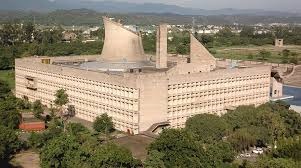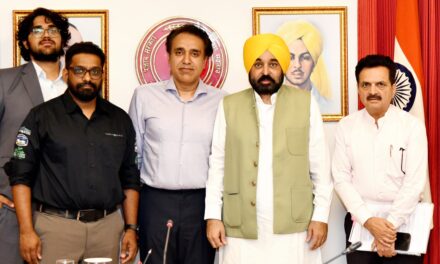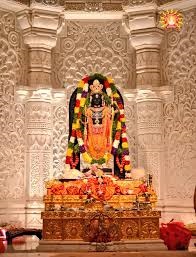Ram Mandir Construction Expected to Contribute Rs 400 Crore in GST Revenue
The construction of the Ram Mandir in Ayodhya, a project of immense cultural and religious significance, is set to contribute a substantial sum to the government in the form of Goods and Services Tax (GST). According to Shri Ram Janmabhoomi Tirtha Kshetra Trust’s general secretary, Champat Rai, the ongoing construction work in the 70-acre temple complex is expected to generate approximately Rs 400 crore in GST revenue.
Speaking on Monday, Rai revealed that this estimate is based on the massive scale of construction and materials being used in the Ram Mandir complex. However, the final figure will only be known once the construction work is fully completed. “The government will be able to give the actual GST collection figure after the work finishes,” he added.
18 Temples to Be Built in the Ram Mandir Complex
The Ram Mandir complex will house a total of 18 temples, making it a significant religious site. These temples will be dedicated to revered figures such as Maharishi Valmiki, Shabari, and Tulsidas, among others. Spread across 70 acres, the temple complex will not only be a spiritual hub but also a major attraction for devotees from across the country and abroad.
Rai assured that every penny of GST due from the project will be paid in full, stressing that “100 percent tax” will be paid to the government. “Not even a single rupee will be reduced in the taxes,” he affirmed, highlighting the trust’s commitment to transparency and compliance with tax regulations.
Public Contributions and Infrastructure
Rai emphasized that the Ram Mandir construction is being carried out with the active participation of the public. Donations and contributions from devotees and well-wishers across the country have been instrumental in funding the temple’s construction. The project has seen overwhelming support from people of all walks of life, reflecting the deep spiritual and emotional connection many feel with the site.
He further explained that the infrastructure being developed around the temple will ensure that Ayodhya can accommodate large numbers of pilgrims with ease. “We have made arrangements so that even if two lakh devotees visit every day, they won’t face any issues,” Rai said.
A Movement of Sacrifice and Struggle
In his remarks, Champat Rai also drew a parallel between the Ram Mandir movement and India’s struggle for independence, likening the sacrifices made by those involved in the temple’s construction to the freedom fighters’ efforts. “This yagya (movement) is no less than the 1,000-year-old struggle for freedom,” he said. “Whatever sufferings and sacrifices were made during the fight for independence, the same has happened in this movement for Ram Janmabhoomi Mukti. This is a movement for public welfare.”
The Ram Mandir movement has a long history, marked by decades of legal and political battles, as well as widespread public support. For many, the temple represents not just a place of worship but a symbol of national pride and cultural heritage.
Sourcing the Shivlinga from Bakwa Village
Rai’s recent visit to Bakwa village in Madhya Pradesh’s Khargone district highlights the attention to detail and devotion going into every aspect of the temple’s construction. He visited the village, famous for its craftsmanship in making Shivlingas, to finalize a Shivalinga for the temple’s Shiva shrine.
Accompanied by an architect and acting on the recommendation of an Indian Administrative Service (IAS) officer, Rai chose Bakwa for its historical significance in producing beautiful and revered Shivlingas. The village, situated on the banks of the Narmada river, is renowned for supplying Shivlingas to temples across India and abroad.
The Ram Mandir complex in Ayodhya is expected to be a monumental structure, not only in terms of its religious significance but also in its contribution to the local and national economy. With the completion of the temple, Ayodhya is likely to see a surge in tourism, bolstering the region’s economic growth while also fulfilling the aspirations of millions of devotees.




